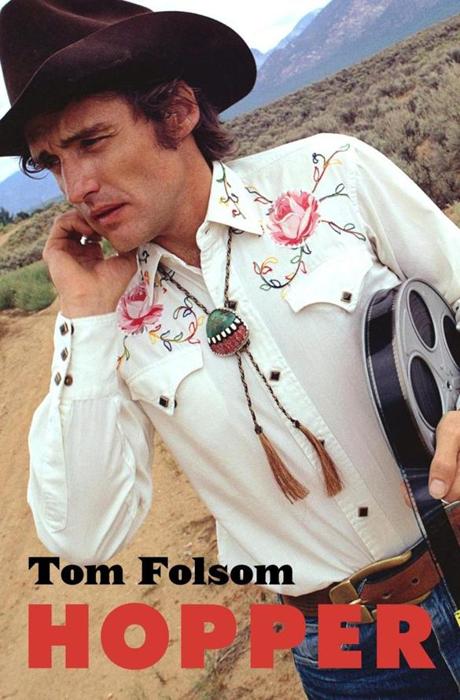When Dennis Hopper first arrived in California from Dodge City, Kan., at 17, he found work at the La Jolla Playhouse. He cleaned dressing rooms “like a stable boy,” writes biographer Tom Folsom.
“What a glamorous job that was,” recalled the actor, straight-faced. He’d never seen a movie star in person, and here he was “actually cleaning their toilets!”
In the aptly haphazard “Hopper,” Folsom makes an intermittent case for the late actor, who died in 2010 at age 74, as the embodiment of the dark side of the American dream: a Midwestern would-be cowboy who set himself up, again and again, to be shot down in Technicolor by his often-misguided ideals. The actor liked to paraphrase Kipling’s poem “If”: “You can treat triumph and disaster the same, because they’re both impostors.”
Any discussion of the most notable movies of each decade would have to include “Rebel Without a Cause” in the 1950s, “Easy Rider” in the ’60s, “Apocalypse Now” in the ’70s, and “Blue Velvet” in the ’80s. That Hopper, whose career was otherwise marked by B-movie mediocrity, appeared memorably in all four makes his story one of Hollywood’s stranger legends. Folsom, the author of “The Mad Ones,” a gonzo romp through the reckless Mafia career of Joey Gallo, chooses brio over minutiae in telling the actor’s story, skittering from one episode to the next with little outline or structure — much as Hopper directed his classic hippie period piece “Easy Rider,” in seven weeks.
“Hopper” by Tom Folsom.
That film, with its iconic customized Harley-Davidson choppers and Peter Fonda’s American flag leather jacket, was Hopper’s moment. But Folsom devotes at least as much space to what followed, the actor-director’s follow-up folly “The Last Movie,” a scatterbrained film-within-a-film shot in Peru and edited, endlessly, in a drug-and-alcohol haze in Hopper’s new compound in Taos, N.M.
“He was consciously using his ability as an actor — a movie man — to play the role of an artist who was going to spectacularly, gloriously, magnificently fail,” writes Folsom, who draws much of his material from magazine features, TV appearances (”Charlie Rose,” “Inside the Actors Studio”), and an obscure, especially strange 1971 documentary called “The American Dreamer.” “The only question was: How was Hopper gonna get to his end?”
Hopper’s obsession with James Dean, whom he supported in “Rebel Without a Cause,” is a recurring theme, from the windup monkey he’d saved from the movie’s opening scene, through which he swore Dean sometimes communicated with him from the afterlife, to Hopper’s Method acting in a 1955 TV show episode as a boy with epilepsy.
“They said my seizures were the best they’d seen,” he told his agent after reading for the part.
Years later, he appeared opposite the other towering figure of the acting revolution, Marlon Brando, in Francis Ford Coppola’s “Apocalypse Now.” Brando “hated stinking Hopper,” writes Folsom, “the pathetic little mutt who wanted to lick his boots.”
Who cared? thought Hopper, who chose to see the bunch of bananas Brando threw at him as a bouquet. After “Blue Velvet,” he had a bit of a renaissance, becoming a model survivor of the asylum to younger actors and artists such as Sean Penn and Julian Schnabel. (Hopper’s second career as a noted photographer and collector of Pop art — the bullet holes he once put in a print by his friend Andy Warhol reportedly added to its resale value — are given short shrift here.)
Ultimately, Hopper lived up to one of Hollywood’s most enduring notions: He didn’t give a damn.
“His movies are like the Medusa head,” says one fellow actor. “It’s all snakes and things, but if you look at it very carefully, and it doesn’t turn you to stone? It’s coooool.”

